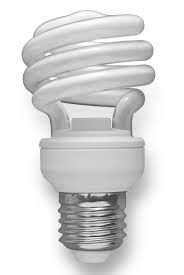How to Go Green at the Office

There are so many small changes you can make at the office to go green that can help employees feel like they are a part of a team that is creating positive change while helping with Corporate Social Responsibility (CSR) initiatives. Danika Carter at Your Organic Life shared a great pin on Pinterest about going green at the office. Keep reading and check out Danika’s pin below to learn more about how you can up the green factor at work and reap all the benefits from environmental to cost savings to improved moral, these changes can have.

Lead the Way with Lighting
Lighting is a huge drain on electricity usage, but it doesn’t need to be that way! The type of bulb used can greatly impact how much electricity is used and even how often the bulbs need to be replaced.
Compact Fluorescent Light bulbs (CFLs) use 66 percent less energy and can last up to 13 times longer than a traditional bulb. Improved efficiency and longevity just by switching the light bulbs you use in your office can help you make big strides in your efforts to go green.
Take Advantage of Sleep Mode
Computers are also responsible for a lot of power usage in most offices. Reduce how much electricity your computers use by setting them to sleep mode. Activating sleep mode essentially puts your computers to sleep after a period of inactivity and uses less power. A computer will quickly wake up when needed, so you will reduce the amount of electricity wasted and lower your electric bill.
Donate or Recycle Old Electronics
Used electronics are not a very commonly recycled material—according to the EPA only 18 percent of used electronics are recycled. This can cause a problem because electronics can contain toxic chemicals, like mercury, lead and cadmium, so you definitely want to keep these items out of landfill.
If you have electronics that are no longer useful to you but they still have some life left in them, consider donating them or if they have outlived their usefulness, make sure to recycle them. The EPA can help you find out how to dispose of your old electronics responsibly.
Recycle Everything You Can
Most offices use a lot of paper and in many instances there is just no way around that. Paper will always be with us for a reason. Still, try to reduce paper use whenever possible – before printing an email consider whether it’s really necessary to do so and if you do print things out make sure to print double sided in order to reduce your paper use. Make sure to recycle all the paper you use and encourage recycling throughout your office by placing clearly labeled recycling bins around your space.
Don’t just stop at paper through—you can also recycle disposable water and soda bottles and cans — or bring your own reusable stainless steel water bottle, plastic utensils labeled with #6 (check with your local recycler to make sure they accept them), soup cans, cardboard, batteries and more. Set up labeled receptacles to collect discarded items and make sure everyone in the office knows what items can be recycled and where they need to deposit those items.
Telecommute and Work From Home
Working from home reduces fuel emissions and energy consumption while also reducing the amount of resources used at the office. Several studies have also shown that employees who work from home are more productive and happier. I love working from home and find that my time is very well spent because I have no distractions. This saves gas and time commuting!
Go Green with the Right Coffee
The average office brews a lot of coffee, so make sure the coffee you drink is fair-trade, shade-grown and organic. Shade-grown coffee helps preserve rain forests by being grown under the canopy while organic growing methods avoid the use of pesticides and herbicides, so both the planet and the consumers are exposed to fewer chemicals.
Add More Green to Your Office
This is a tip I LOVE!! Plants naturally clean and improve air quality by reducing dust, bacteria, and mold and in fact, one plant can improve the air quality for three people. Having plants in the office can also help improve mood and moral and make an office less dreary.
When adding plants to your workspace make sure to consider the type of plant and placement—ideally you want hardy plants that are drought resistant and grow well in the amount of light available (usually shade-loving plants grow well in an office). Flowering plants may introduce pollen into your workspace, so be sensitive to people’s allergies when selecting plants.
How Do You Go Green at the Office?
These are all minor changes that can have a big impact on the greenness of your office, help with CSR initiatives, and sometimes may even save your company money. Let us know in the comments if you have any tips or tricks to make your office green, check out this post on CSR, and also check out Danika’s pin to learn more about how to go green at the office.
Tagged




